Just a description of some things that have occurred throughout history mainly on today's date but also other events that I come across either online or through other mediums.
Don't wanna be here? Send us removal request.
Text

Welcome everyone to a new feature here on my page called HistorySisco Watches NYC Movies. The intent is for me to watch movies that were authentically filmed in the city that never sleeps. I say authentically since there are many films that are supposed to be based in NYC but are filmed elsewhere. I might touch on those briefly but the focus will be on true blue NYC movies.
While movies have been filmed on the streets of NYC since the 1920s, my experience with NYC films center on the last 50 to 60 years. A little background is necessary. I was born in the NYC of the 1970s, raised in the 1980s and became an adult in the 1990s. As you can imagine, those years are pivotal for me. Then you have the seismic break known as 9-11.
The NYC that existed before that fateful day changed tremendously afterwards. After that event, streets that were easily navigable by car were now off limits. Landmarks disappeared, leaving empty lots. The care free nature of NYC that I grew up experience was no more. For me, my NYC movie watching will be seen through the lenses of pre 9-11 and post 9-11.
I'll do my best to evenly distribute the movies along the time line. But don't blame me for showcasing more NYC from before 9-11 due to nostalgia and sentimental reasons.
Anyway, get your popcorn, drinks and other snacks. Let's enjoy the magic that are NYC movies.
#New York City Movies#NYC Movies#New York History#NY History#NYC History#NYC Cinema#NYC Flicks#History#Historia#Histoire#Geschichte#HistorySisco#HistorySisco Watches NYC Movies
0 notes
Text

I saw an ad for this pop up on my feed and went right to @tubi to check it out. The inner kid in me will not be disappointed.
Tank Tech is described as follows:
"Explore the most impressive war machines from 1900 through today, with high-end special effects techniques, archives, and experts’ testimonies."
And off we go.
#Tank Tech#Tanks#Armored Machinery#War Machines#Weapons Of War#Military History#History#Historia#Histoire#Geschichte#HistorySisco
0 notes
Text
Ok. One more article on Plato's Retreat by the always entertaining New York Post
#Plato's Retreat#Sex History#Swingers Club#New York History#NYC History#History#Historia#Histoire#Geschichte#HistorySisco
2 notes
·
View notes
Text
Based on my last post on the documentary series Crime Scene: The Times Square Killer, here us an intriguing article on the famed swingers' club Plato's Retreat.
#Plato's Retreat#Swingers Club#Sex History#New York City History#NYC History#New York History#History#Historia#Histoire#Geschichte#HistorySisco
1 note
·
View note
Text

Next on the documentary watch tour is a series that I started a while back and never got to finish. Crime Scene: The Times Square Killer tells the story of the "Torso Killer" who preyed on women, killing them and mutilating them during the New York City of the 1979.
Its fascinating to see the grimy NYC of the 1970s. Its interesting to see the history of Times Square going from being a place to find dirty books, to peeps shows to XXX theaters to live peep shows. Times Square, the crossroads of the world, was one giant red light district. By the mid 1990s, Times Square went from being seedy to disneyfied.
Some people would day that its worse now.
#Times Square Killer#Crime Scene The Times Square Killer#Times Square#Crossroads Of The World#The Deuce#Forty Deuce#Torso Killer#Crime History#New York History#NY History#NYC History#History#Historia#Histoire#Geschichte#HistorySisco
1 note
·
View note
Text

Given the events of this past weekend in Pennsylvania, this program Fatal Shot: From One Death Many is highly relevant. This program deals with political assassinations around the world and the aftermath of those acts. Here is a synopsis:
"Political assassinations have triggered war, genocide and the deaths of countless others. When politically motivated assassins kill, the outcome is often the same: from one death many."
Originally shown on @PBS I'm catching it on the underrated @curiositystream Give it a go.
#FatalShot#Fatal Shot From One Death Many#Political Assassinations#Political History#World History#Crime History#History#Historia#Histoire#Geschichte#HistorySisco
0 notes
Text

I came across this @netflix documentary The Martha Mitchell Effect and realized that I had no idea who Martha Mitchell (September 2, 1918 - May 31, 1976) was. Boy I had no idea what I was missing. She was quite a fascinating figure in American politics and history.
Mrs. Mitchell was the wife of John N.Mitchell who was the former Attorney General of the United States and campaign manager to President of the United States Richard Nixon. She was an outspoken woman in Washington politics at a time when sadly women were seen and not heard in a male dominated arena. She was a darling of the media in an administration that hated the media.
She went from being an ardent supporter of President Nixon to one of his biggest critics. The point of contention? The Watergate scandal. I'll leave it to you to watch to find out all the details.
#Martha Mitchell#Martha Mitchell Effect#Martha Was Right#American History#US History#Richard Nixon#Watergate#1970s History#History#Historia#Histoire#Geschichte#HistorySisco
0 notes
Text


Happy Easter!!! Today I'm highlighting the Roman Catholic Church of Our Savior which is located at 59 Park Avenue corner of 38th Street.
Ground was broken on April 1, 1956 and the church was dedicated by Cardinal Spellman on September 27, 1959. It was designed in the Romanesque style by architect Paul C. Reilly. Its believed that the church is one of the first (if not the first church) in NYC to have air conditioning.
1 note
·
View note
Text
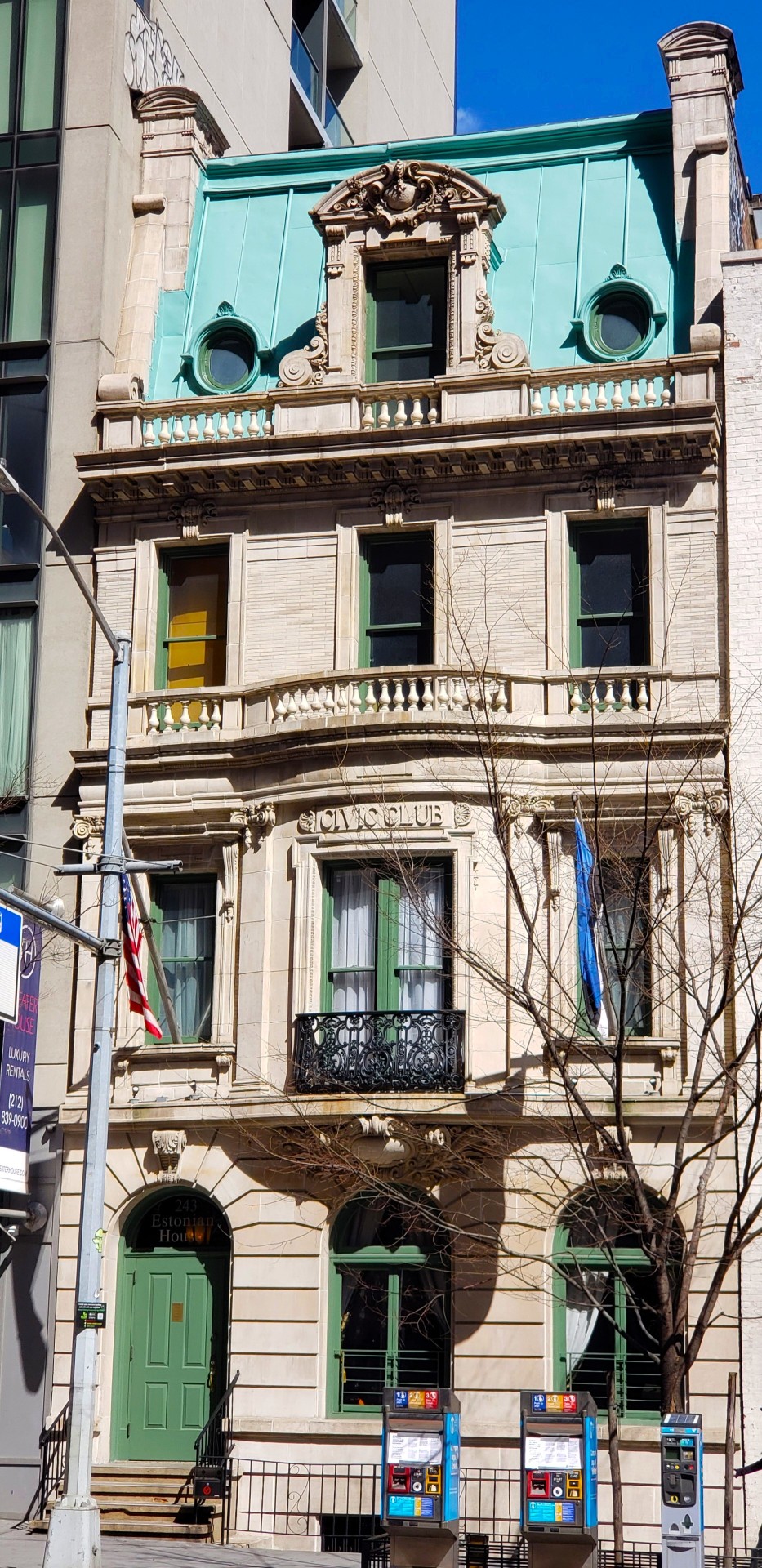
This beautiful Beaux-Arts building at 243 East 34th Street is called Estonian House fka The Civic Club. It was designed by Brooklyn architect Thomas A. Gray in 1899 and founded by social reformer, businessman and Politician Frederick Norton Goddard (08/20/1860 - 05/28/1905.)

Goddard's vision for the Civic Club was for it to be a safe haven gor those in the who lived in the surrounding community. Goddard is described as such in his obituary from the New York Times dated May 29, 1905:
"Born into the possession of great wealth and reared in luxury, but with a wholesome interest in his fellow-beings, he was moved to leaving his own class and settle among people of the humblest walks of life. And he did not go among them to study them, to use them or to pity them. He lived with them as one of their own, sharing their cares and pleasures, sorrows and confidences."
When he passed suddenly in 1905, The Civic Club ceased to operate. The building remained in the family until 1946. The building was sold to the New York Estonian Educational Society, Inc. by Goddard's widow Mrs Alice S. Winthrop.
Rechristened The Estonian House, it would become a place where Estonian culture and learning would take place for generations of Estonians in New York City. Estonian House became New York City Landmark No. 0980 in 1978. It was added to the United States National Register of Historic Places in 1982.
In 1992 the building went under a $100,000 revovation of its limestone and brick facade and interior work under the direction of Estonian architect Tonu Vanderer.
From someone who delivers the mail here regularly, the interior is beautiful. You can see a picture of it on the Estonian House website.
#Estonian House#The Civic Club#Frederick Norton Goddard#Beaux Arts#Beaux Arts Architecture#Alice S Winthrop#New York Estonian Educational Society#Architectural History#NYC Architecture#New York History#NY History#NYC History#History#Historia#Histoire#Geschichte#HistorySisco
1 note
·
View note
Text

I recently came across these old school painted signs/advertisements on a couple of buildings near 5th Avenue and 33rd Street and Madison Avenue and 32nd Street. They all seem to be advertising handbags and the like. I looked up the companies listed. Here is what I found.
Robert Bestien was located at 1 East 33rd Street from 1978 to 1987. The company specialized in handbags and leather goods since the 1950s.
The Magid Handbags name brand has been around since 1916 and was created by Eastern European immigrants Anna and Isaac Magid. As per the MagicNYC website The, The Rand family led by patriarch Moishe Rand started making handbags in 1956 and is still a family owned and run company in the hands of the Rands.
The Coblentz Bag Company was created by Frenchman Louis B. Coblentz and was established in 1935 at 6 West 33rd Street. The company would move to 30 East 33rd Street in 1938. They were there until the business went out of business in 1980.
For Further Reading:
Robert Bestien, 1 E. 33rd St. (2003) from 14to42.net
Magid, Coblentz, Alan Miller, etc., 30 E. 33rd St. (Crystal Bldg.) near Madison Ave. (2002) from 14to42.net
MagidNYC.com
The Coblentz Bag Company from the Bag Lady Emporium website
#Robert Bestien#Magid Handbags#Coblentz Bag Company#Ghost Advertisments#Painted Signs#Manufacturing History#New York History#NY History#NYC History#History#Historia#Histoire#Geschichte#HistorySisco
0 notes
Text

I've been meaning to post about this beautiful building at 207 East 32nd Street in the Murray Hill neighborhood. Until recently it was under renovations after being purchased by the New York Times Review of Books (NYRB) in 2020. Prior to the NYRB, the building was owned by famed graphic designer and Bronx-born Milton Glaser (June 26, 1926 - June 26, 2020.)
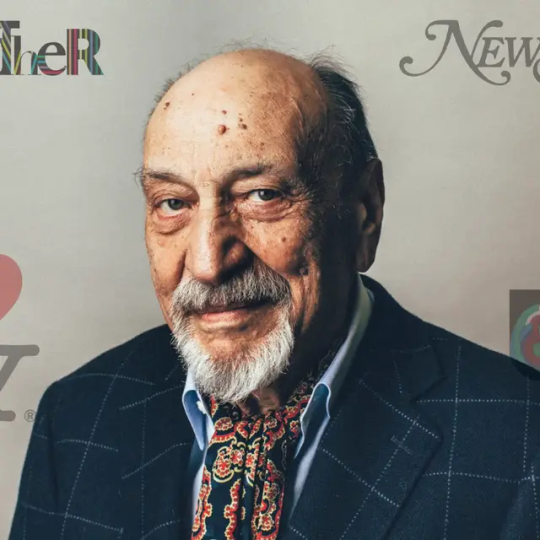
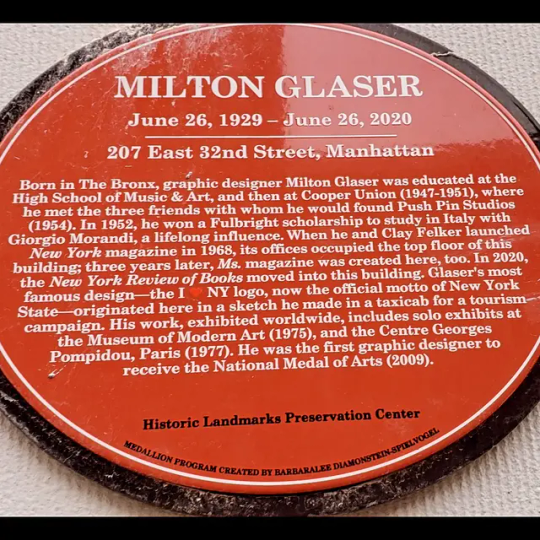
Glaser bought the 1902 Beaux-Arts building in 1965 which was initially built for the famed (or infamous) New York political machine Tammany Hall. According to legendary New York Times writer Christopher Grey in his post "Where the Ghosts Smoke Cigars" from Streetscapes dated December 19, 2013.
"The architect, Robert T. Lyons, developed an exuberantly French facade of red brick and limestone, with a mansard roof; although showy for 32nd Street east of the Third Avenue El, it was worthy of any lot on Fifth Avenue. Lyons presumably gave it a few smoke-filled rooms, and it also had a top-floor gymnasium, card rooms and an assembly hall for political conventions."
After Tammany Hall, the building was used by the City of New York as a courthouse.
Aside from being co-founder of New York Magazine in 1968 (with Clay Felker,) Glaser is arguably best known for his iconic "I ❤ NY" logo.
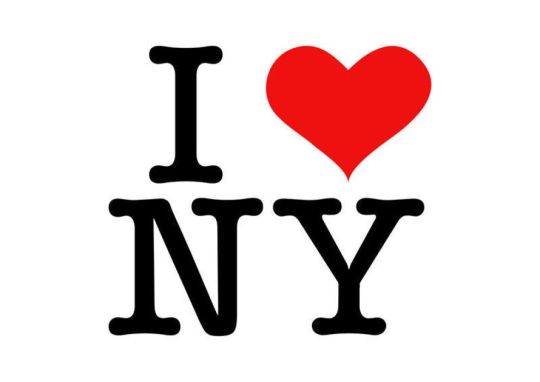
Glaser is believed to have created the logo during a cab ride and it started being used in 1977. Glaser created the logo with the best interests of New York City at heart during a dark period in the city's history when crime was rampant, nearing bankruptcy and the metropolis was being referred to as "Fear City." Glaser created the logo on a pro-bono basis.
The renovation of the building was completed in February of this year with Glaser's "Art is Work" remaining part of the new front door.

#Milton Glaser#I Love NY#I❤NY#Tammany Hall#Architectural History#New York History#NY History#History#Historia#Histoire#Geschichte#HistorySisco#New York City History#NYC History
5 notes
·
View notes
Text
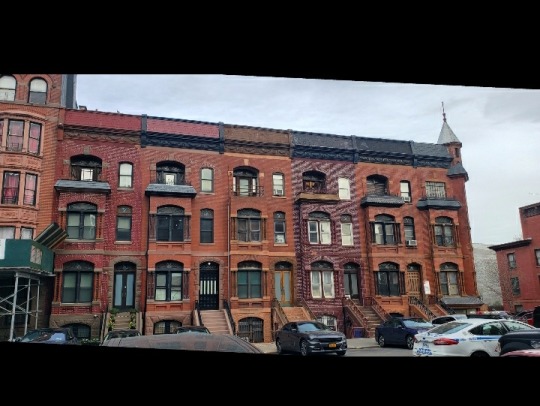
I've always loved these buildings located on Alexander Avenue between 138th and 139th Streets in the Bronx. You don't really see too many of these types of row houses in the Bronx. I've mainly seen them in Brooklyn, particularly in Fort Greene.
According to the Historic District Council (HDC) Mott Haven Historic Districts webpage:
"Designated July 29, 1969
Alexander Avenue, once known as “The Irish 5th Avenue” and “Politicians’ Row,” features numerous handsome residences and public buildings from the turn of the century. One of the earliest, if not the earliest, series of row houses in the Bronx can be found here, built between 1863 and 1865."
There's nothing like coming across some history while getting your steps in on the streets of the Bronx and New York City.
#AlexanderAvenue #MottHavenHistoricDistrict #ArchitecturalHistory #RowHouses #BronxHistory #NewYorkHistory #NYHistory #NYCHistory #History #Historia #Histoire #Geschichte #HistorySisco
For Further Reading:
Mott Haven Historic District from the Museum of New York City website
#Alexander Avenue#Mott Haven Historic District#Architectural History#Row Houses#Bronx History#New York History#NY History#NYC History#History#Historia#Histoire#Geschichte#HistorySisco
19 notes
·
View notes
Text
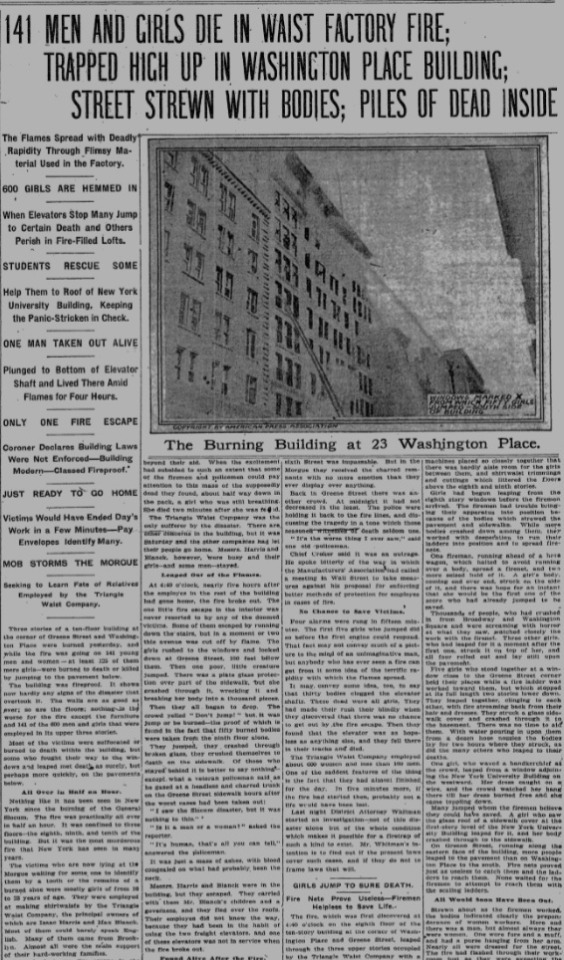
On This Day in New York City History March 25, 1911: A deadly fire erupted in the Asch Building located on 23-29 Washington Place which led to the deaths of 146 people (123 women and 23 men.)
The Triangle Shirtwaist Factory occupied the 8th, 9th and 10th floors of the Ashe Building. Blocked stairwells and locked exits hindered the attempts for those trapped by the blaze to be rescued and to escape. The only fire escape collapsed due to the weight of those trying to escape the fire. The Fire Department was also hampered by having ladders that reached up to the 6th floor. Many leapt to the deaths trying to escape the flames.
The Sullivan-Hoey Fire Prevention Law was signed in October 1911, which required sprinkler systems to be installed in buildings. The Factory Investigative Committee was also formed whose observations led to 20+ new laws being passed in the areas of building, fire amd workers safety.
With the overwhelming majority of those killed being immigrant women who often worked grueling 50+ hour, six day work weeks, the International Ladies' Garment Workers' Union (ILGWU) saw a rise in both membership and prominence.
While tragic, many of the lessons from that day were learned and applied in safer environments for workers today.
#TriangleShirtwaistFactoryFire #AschBuilding #LaborHistory #SafetyHistory #WomensHistory #WomensStudies #HERStory #NewYorkHistory #NYHistory #NYCHistory #History #Historia #Histoire #Geschichte #HistorySisco
#Triangle Shirtwaist Factory Fire#Asch Building#Labor History#Safety History#Fire Safety#Women's History#Women's Studies#HERStory#New York History#NY History#NYC History#History#Historia#Histoire#Geschichte#HistorySisco
33 notes
·
View notes
Text


On This Day in New York City History March 24, 1900: The ground was broken by NYC Mayor Robert Anderson Van Wyck at City Hall for NYC's first subway called the Interborough Rapid Transit line (IRT). Established by Rapid Transit Act of 1894, the contract known as "Contract One", started operating the first underground line on October 27, 1904 and was managed by financier August Belmont.
The initial IRT line started at City Hall and followed the current 4-5-6 train local route to 42nd Street. It would then turn west on 42nd and continue north under Broadway on the current 1 train route to 145th Street.
Service into Brooklyn would come with "Contract Two" of 1902 with stops at Borough Hall, Hoyt Street Nevins, Nevins Street and Atlantic Avenue.. our of the original stations City Hall, Worth Street, 18th Street and 91st Street have been closed.
#NYCSubway #InterboroughRapidTransit #IRT #RobertAndersonVanWyck #AugustBelmont #SubwayHistory #MassTransitHistory #TransportationHistory #TrainHistory #NewYorkHistory #NYHistory #NYCHistory #History #Historia #Histoire #Geschichte #HistorySisco
#NYC Subway#Interborough Rapid Transit#IRT#Robert Anderson Van Wyck#August Belmont#Subway History#Mass Transit History#Transportation History#Train History#New York History#NY History#NYC History#History#Historia#Histoire#Geschichte#HistorySisco
4 notes
·
View notes
Text
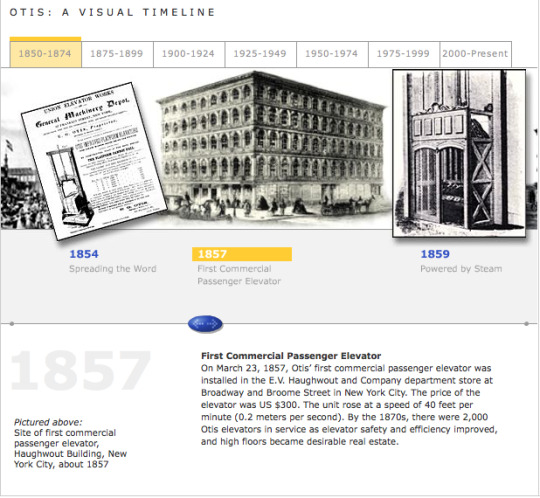
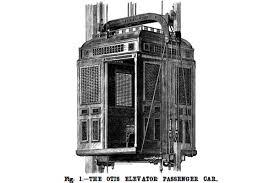
On This Day in New York City History March 23, 1857: The first commercial passenger elevator is installed by Elisha Graves Otis in the E.V. Haughwout Building. The Haughwout Building was home to a five-story department store at 488 Broadway on the corner of Broadway and Broome Street in what is today the SOHO neighborhood of NYC. The elevator came at a cost of $300 dollars which in today's dollars would cost $10,373.79.
What made Otis' elevator successful and revolutionary was the safety brake that prevented the elevator from falling. The creation of safe elevators led to building being built higher up into the sky. Life as we know it in vertical cities of today wouldn't be what they are without the Otis elevators.
#ElishaOtis #OtisElevators #HaughwoutBuilding #EngineeringHistory #ArchitecturalHistory #NewYorkHistory #NYHistory #NYCHistory #History #Historia #Histoire #Geschichte #HistorySisco
#Elisha Otis#Otis Elevators#Haughwout Building#Engineering History#Architectural History#New York History#NY History#NYC History#History#Historia#Histoire#Geschichte#HistorySisco
4 notes
·
View notes
Text
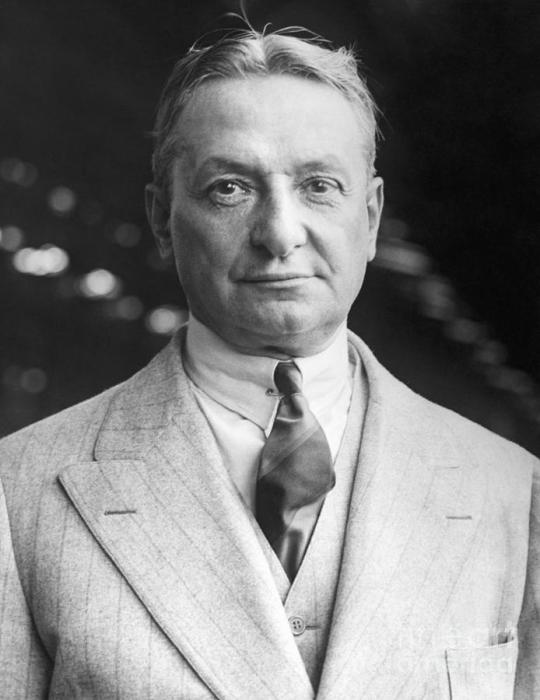
On This Day in New York City History March 21, 1867: Theater director and producer of the famed Broadway shows called the Ziegfield Follies, Florenz Ziegfield Jr. (March 21, 1867 - July 22, 1932) is born in Chicago, Illinois.
It can be argued that the Great White Way aka Broadway is what it is today because of Ziegfield's shows, that where held on Broadway from 1907 until his death in 1932. Based on the the Folies Bergère of Paris, Ziegfield's shows were a blend of vaudeville and variety shows which led to the creation of such terms as the Ziegfield Girls and led to the rise of many of the famous artists of the 1920s through the 1940s.
Ziegfield passed away due to complications from long term pneumonia at the age of 65.
#FlorezZiegfield #ZiegfieldFollies #BroadwayHistory #EntertainmentHistory #TheaterHistory #VaudevilleHistory #NewYorkHistory #NYHistory #NYCHistory #History #Historia #Histoire #Geschichte #HistorySisco
#Florenz Ziegfield#Ziegfield Follies#The Great White Way#Broadway History#Entertainment History#Theatre History#Vaudville History#New York History#NY History#NYC History#History#Historia#Histoire#Geschichte#HistorySisco
8 notes
·
View notes
Photo

On This Day in New York City History March 20, 1986: By a vote of 21-14, the City Council of New York passed a gay rights bill known as Intro. 2. The passing of the bill came at the culmination of 15-years of efforts to get the legislation passed.
According to the article "Homosexual Rights Bill is Passed by City Council in 21-14 vote" from the New York Times dated March 21, 1986, the purpose of the bill is described as follows:
"The bill, which amends the administrative code of New York City, is intended to ban discrimination on the basis of sexual orientation in housing, employment and public accommodations."
The bill would be signed into law by Mayor Edward Koch on April 2, 1986.
#GayRightsBill #LGBTQHistory #GayHistory #GayRightsHistory #CivilRightsHistory #CivilRights #NewYorkHistory #NYHistory #NYCHistory #History #Historia #Histoire #Geschichte #HistorySisco
https://www.instagram.com/p/CqBYB3_OBh-/?igshid=NGJjMDIxMWI=
#Gay Rights Bill#LGBTQ History#Gay History#Gay Rights History#Civil Rights History#Civil Rights#New York History#NY History#NYC History#History#Historia#Histoire#Geschichte#HistorySisco
6 notes
·
View notes